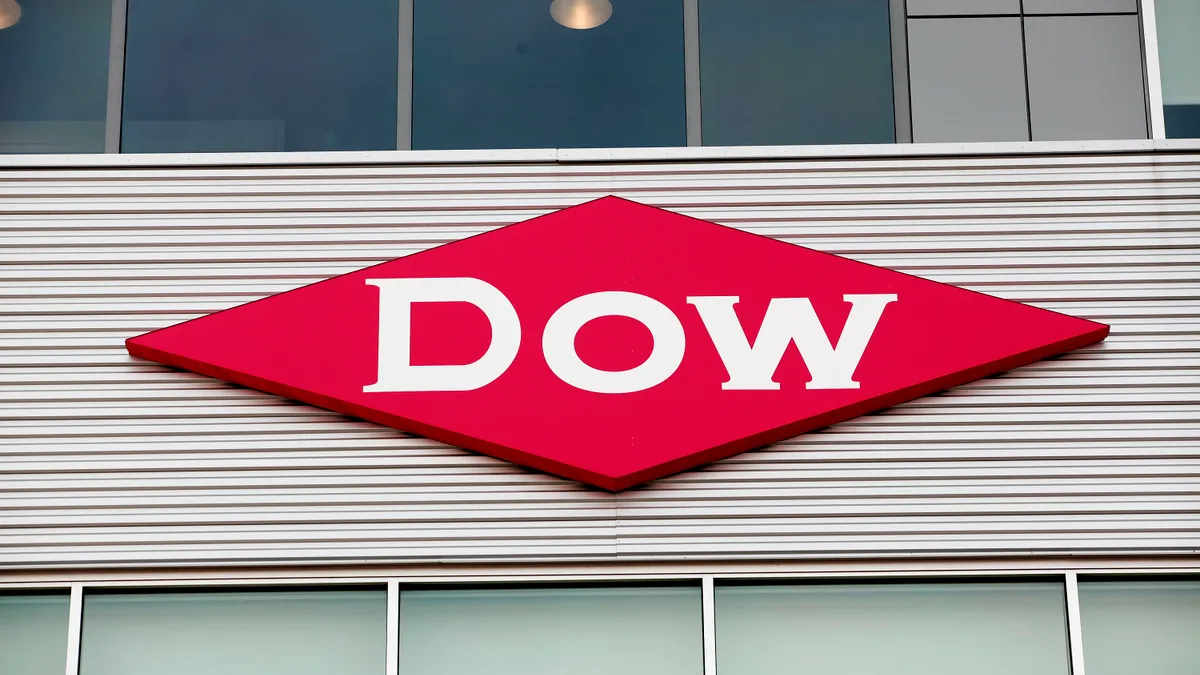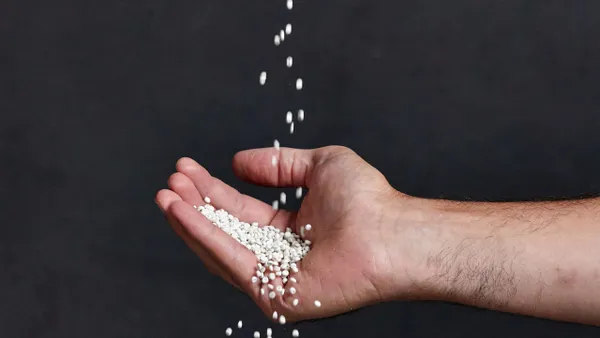Dow has released its 2022 ESG report, charting progress toward the 2025 sustainability goals it set in 2015 and other initiatives.
Of the company’s $56.9 billion in net sales, $29.3 billion is from packaging and specialty plastics, which includes packaging for sectors including food, industrial and consumer, according to the report.
In 2020 Dow introduced new targets that expanded the existing initiatives for reducing carbon emissions and plastic waste, and in 2022 the company announced it would accelerate progress toward the targets. The waste goal is to “transform plastic waste and other forms of alternative feedstock to commercialize 3 million metric tons of circular and renewable solutions by 2030.” Dow also aims to reduce its carbon emissions by 2 million metric tons by 2025 from its 2020 baseline.
The report highlight’s Dow’s intention to invest $1 billion annually to drive growth and decarbonization, including investments in “next-generation” manufacturing technology. In 2022, the company developed plans toward greater Scope 1 and Scope 2 emissions decarbonization for each of the 25 of its highest emitting sites, which collectively account for 95% of those types of emissions.
Waste and recycling
The report says Dow invested more than $200 million over the last three years into “impact funds, recycling infrastructure, venture capital, R&D and key technologies to transform waste into solutions that support a circular economy.” It aims for 100% of its products to be recyclable or reusable by 2035 and so far stands at 87%. Dow is working to increase recycling rates and scale recycled material production to meet demand, according to the report. Part of the approach in its waste strategy is to "build a materials ecosystem" that involves mechanical recycling, chemical recycling and bio-based materials.
As part of its waste goal acceleration, the company is partnering with sustainability-minded organizations and companies. Last year it launched a recycling pilot program with WM for curbside collection of hard-to-recycle film, like bread bags and cling wrap, for processing at WM MRFs. It also partnered with Mura Technology to construct multiple “advanced recycling facilities” in the United States and Europe, with the goal of adding up to 600 kilotons of annual recycling capacity by 2030.
The report’s content suggests that Dow does not intend to cease plastic production, despite local and state government bans on certain single-use plastic items, but rather improve the process’ circularity, sustainability and decarbonization. It cites a McKinsey report that examines life cycle assessments and concludes that certain plastics manufacturing processes have lower emissions than those for some alternative materials, and “in many applications, particularly those used in food packaging, plastics can contribute to decarbonization efforts.” However, the Dow ESG report also notes efforts to increase the amount of bio-based and biodegradable material solutions in its portfolio and boost efforts to develop “safer” materials.
Electricity and water
Dow’s decarbonization strategy involves reducing overall energy consumption and reducing the use of fossil fuels for energy. As of Q4 2022, Dow sourced 40%, or 1,000 megawatts, of its electricity from renewables, exceeding a 2025 goal of 750 MW. It is building in Canada the “world’s first net-zero carbon emissions integrated ethylene cracker” — a plant that performs the first step of the process of transforming a natural gas component into plastics. It anticipates the new equipment will “decarbonize 20% of our global ethylene capacity and grow our global polyethylene capacity by 15%.” The company also is working with X-energy to install a grid-scale advanced nuclear reactor to power an industrial site in Texas.
The report explains that materials production is inherently water intensive and the company therefore focuses on water stewardship. It’s aiming to reduce freshwater intake by 20% by 2025 at six key water-stressed sites. According to the report, Dow had challenges with water stewardship last year because three of the water-stressed sites experienced drought conditions, which affect water quality and availability, both of which increase demand.
Diversity
Dow hired its newest chief inclusion officer last year. In 2022, women comprised 28.1% of Dow’s U.S. and Canada workforce and 37.1% of the management workforce, up from 27.6% and 36.5%, respectively, in 2021. For the U.S. workforce, 27.5% were considered ethnic minorities, up from 26% in 2021, as are 22.9% of managers, up from 21.2%.















